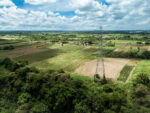The country’s push to incorporate nuclear energy into its power mix has received a significant boost after the International Atomic Energy Agency (IAEA) issued an “encouraging assessment” of the country’s nuclear energy program. The review, part of a follow-up integrated nuclear infrastructure review (INIR) mission conducted from 2 to 6 December 2, highlighted the country’s progress in advancing nuclear energy infrastructure.
In a statement released over the weekend, Department of Energy (DOE) Secretary Raphael Lotilla expressed optimism, saying the IAEA’s recognition of the country’s efforts marks a critical step in the nation’s nuclear energy journey. “I welcome the encouraging assessment from the IAEA, which follows the conclusion of the follow-up INIR Mission. It underscores the country’s commitment to developing a safe and responsible nuclear energy program,” Lotilla said.
The IAEA’s review acknowledged that the Philippines had made significant strides since its initial INIR Mission in 2018. The agency noted that most of the recommendations from an earlier assessment had been addressed, which the DOE views as testament to the government’s determination to ensure nuclear energy is integrated into the national power grid.
Key advancements include the formal adoption of a national position on nuclear energy through a Presidential executive order, the drafting of a comprehensive nuclear law, and improvements in essential areas such as regulatory frameworks, radiation protection, radioactive waste management, and emergency preparedness. Additionally, the country has bolstered its human resource development capacity, preparing the workforce for the growing nuclear sector.
“We are fully committed to adhering to global standards and best practices in nuclear infrastructure development,” Lotilla said, adding that the Philippines is focused on adopting nuclear energy responsibly. “The goal is to build a future where clean, reliable, and affordable energy powers the progress of the country and the Filipino people.”
As part of its energy future, the Philippines projects bringing its first nuclear power plants online by 2032, starting with an initial capacity of 1,200 megawatts (MW). The country aims to expand this to 2,400 MW by 2035 and ultimately reach 4,800 MW by 2050, as outlined in the Philippine Energy Plan.
In a related development, the DOE also highlighted the recent conclusion of the second United States-Philippines Energy Policy Dialogue (EPD), which took place last Friday. The dialogue reinforced both nations’ shared commitment to advancing energy security, expanding clean energy access, and accelerating the clean energy transition.
The EPD builds on the momentum of U.S. vice president Kamala Harris’ visit to the Philippines in November 2022, where both countries underscored the importance of sustainable energy partnerships to drive economic growth and address climate challenges. The key outcome of this year’s dialogue was the finalization of a framework document, setting the stage for regular and structured engagements in the energy sector between the two nations.
The DOE highlighted the need for innovative technologies, resilient infrastructure, and access to financing to ensure that the energy transition is equitable and inclusive. This alignment with global energy priorities, including those discussed at the EPD, is seen as crucial for achieving the shared goal of a sustainable and clean energy future.







